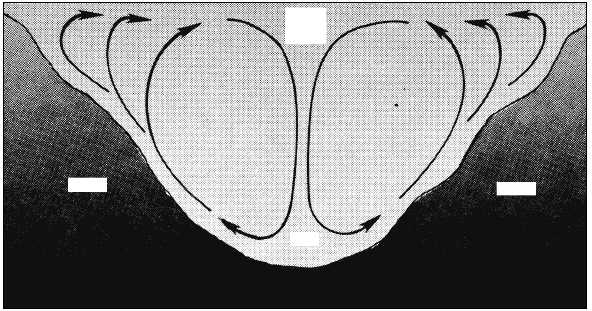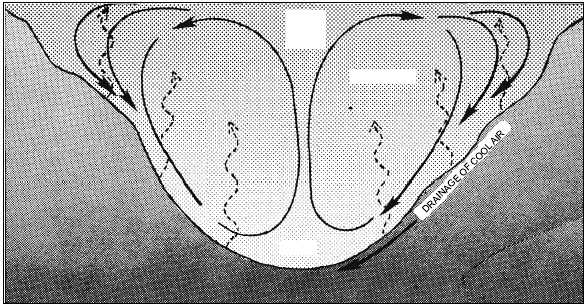sandy slopes devoid of vegetation are the most effective
heating surfaces. If the slopes are steep, the ascending
breeze tends to move up the valley walls. The
expansion of the heated air next to the surface produces
a slight local pressure gradient against the ground
surface. As the heating becomes stronger, convective
currents begin to rise vertically from the valleys (figure
3-28). The updrafts along the valley walls continue to
be active, particularly at the head of the valley. The
valley breeze usually reaches its maximum strength in
the early afternoon. It is a stronger and deeper wind
than the mountain breeze. It is difficult to isolate the
valley breeze effect because of the prevailing gradient
winds. Consequently, the valley breeze is much more
likely to be superposed as a prevailing wind than is the
mountain breeze, which by its very nature can develop
only in the absence of any appreciable gradient wind.
The valley breezes are generally restricted to slopes
facing south or the more direct rays of the sun, and they
are more pronounced in southern latitudes. They are
diurnally strongest in the late afternoon and are
seasonally strongest in summer.
3-25
UP-
DRAFT
WARM
RADIATION
AG5f0327
COLD
Figure 3-27.—Mountain breeze or katabatic wind. During the night outgoing radiation cools air along hillsides below free air
temperature. The cooled air drains to lowest point of the terrain.
COOL
DOWN-
DRAFT
AG5f0328
COLD
WARM
WARM
Figure 3-28.—Valley breeze or anabatic wind. During the daytime hillsides heat quickly. This heating effect causes updrafts along
slopes—downdrafts in the center.




